Indonesia’s cultural landscape goes much beyond the well-trodden pathways of Bali
and Jakarta. Villages scattered throughout the archipelago’s 17,000 islands serve as
living museums, preserving ancient traditions while adapting to the modern world.
These jewels in the crown offer a true experience that showcases a nation’s diverse
heritage, traditional crafts, and warm hospitality.
Tenganan (East Bali)
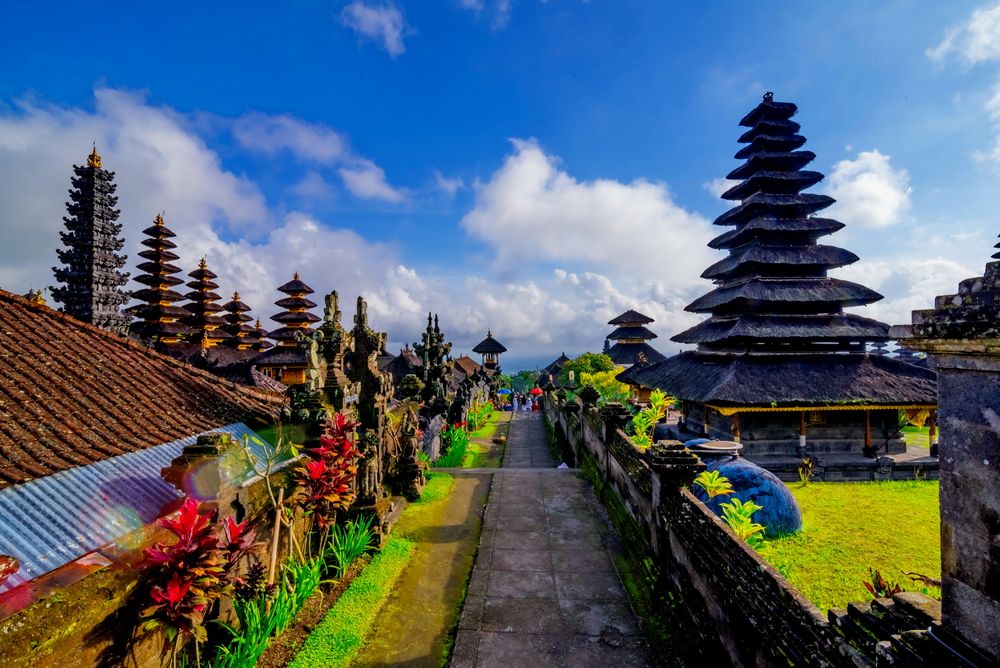
This is one of the last few Bali Aga (original Balinese) settlements, located 3 miles
from Candidasa. The community is famous for its double-ikat weaving technique,
which makes the sacred grinning textiles said to have magic powers.
Their architecture, preserved over the centuries, features traditional gates and community halls. Tenganan has a unique calendar that governs their festivals and ceremonies throughout the year.
The village layout follows traditional rules, with homes arranged in parallel rows facing a wide ceremonial street.
Wae Rebo (Flores)
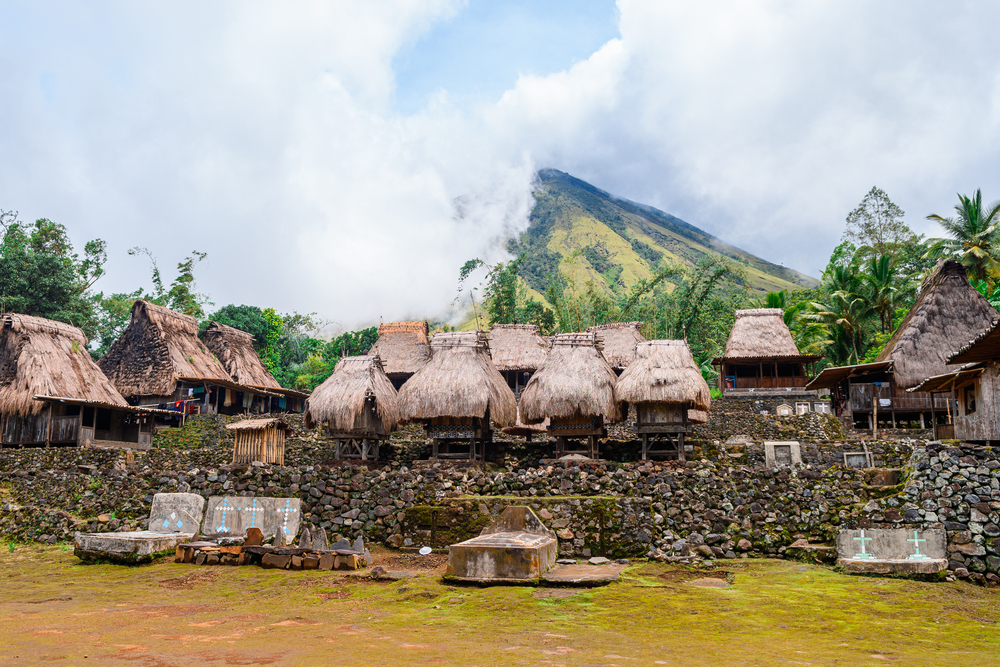
Situated 3,600 feet above sea level in the mountains of western Flores, Wae Rebo
enchants visitors with its seven cone-shaped communal houses, called mbari Niang.
These impressive structures, made from local natural materials, can accommodate
several families under one roof.
The village’s isolation has helped preserve its ancient megalithic traditions and unique coffee cultivation methods. The community retains strong spiritual connections with its ancestors through regular ceremonies and rituals.
The path to Wae Rebo requires a four-mile hike uphill through pristine forest.
Like Travel Pug’s content? Follow us on MSN.
Penglipuran (Central Bali)
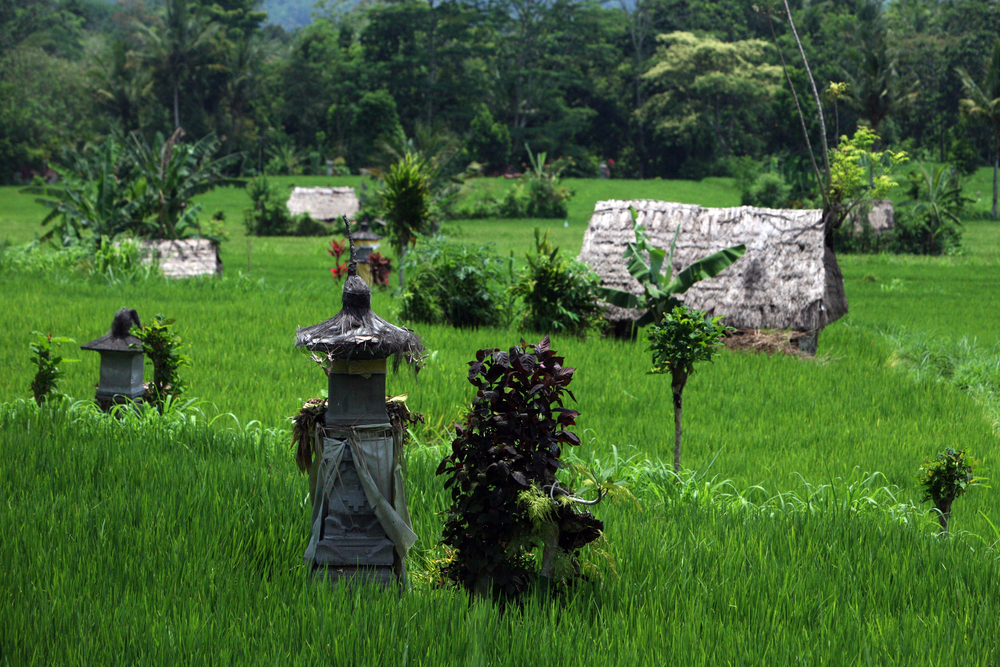
Set against bamboo forests, Penglipuran showcases immaculate traditional Balinese
architecture and urban planning. Every home in this village follows the same
traditional layout based on Balinese cosmology and spatial concepts.
The community’s dedication to environmental preservation has earned them recognition
as one of the cleanest villages in Indonesia. Their unique bamboo crafts industry
supports local artisans while maintaining sustainable harvesting practices.
The village’s entrance gate and temple complex demonstrate classical Balinese
architectural principles.
Trunyan (East Bali)
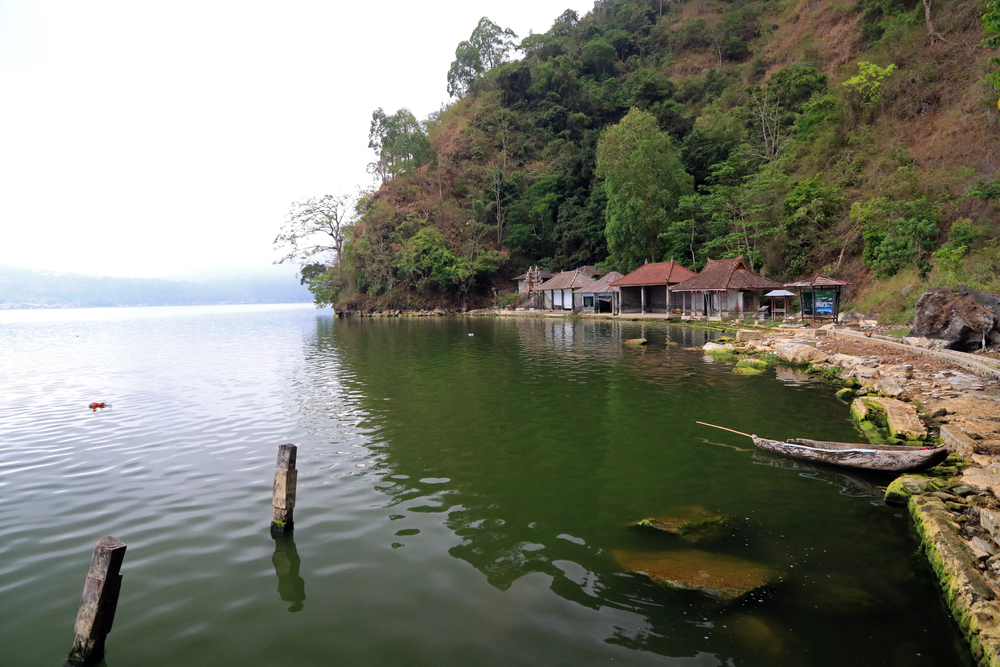
Situated on the shores of Lake Batur, Trunyan is known for its unique funeral
practices that differ from typical Balinese Hindu traditions. The village’s ancient Bali
Aga culture has remained largely unchanged for centuries, preserving pre-Hindu
elements in their customs.
Their distinctive open-air cemetery uses the fragrant taru minyan tree to mask decomposition odors naturally. The village temple contains a 13-foot-high statue believed to be over 1,000 years old.
The community maintains strict marriage and social organization rules based on ancient customs.
Bena (Flores)
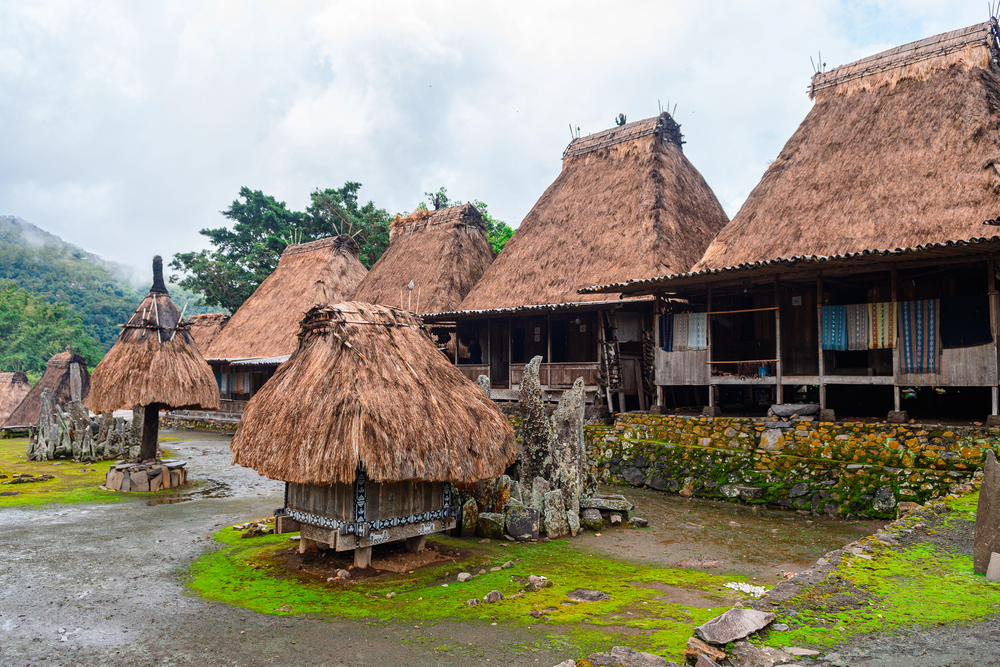
The megalithic village of Bena features impressive stone formations and traditional
houses arranged in a circular pattern around ceremonial ground. Nine clan houses
stand proudly with distinctive high-pitched roofs and tribal decorations and offerings.
The village’s location offers stunning views of Mount Inerie, an active volcano that
plays a central role in local mythology. Traditional weaving practices here produce
some of the finest ikat textiles in Flores.
Ancient stone monuments throughout the village mark important ceremonial spaces and ancestor worship sites.
Like Travel Pug’s content? Follow us on MSN.
Kete Kesu (Sulawesi)
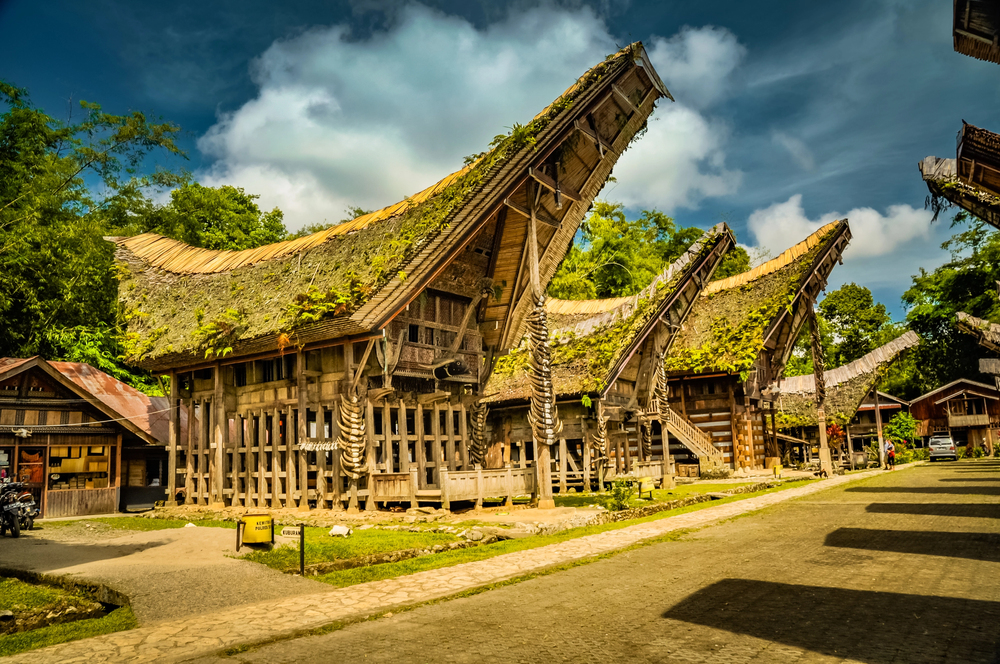
This ancient Torajan village showcases the region’s distinctive boat-shaped houses
with dramatically curved roofs and intricately carved decorations. The village
contains several well-preserved tongkonan (traditional houses) and hundreds-of-
year-old rice barns.
Ancient burial sites in nearby cliffs feature unique tau-tau effigies guarding ancestors’ graves. The community maintains complex funeral rituals that can last days and draw visitors across the region.
Traditional wood carving techniques passed down through generations create the elaborate decorations seen throughout the village.
Kampung Naga (West Java)
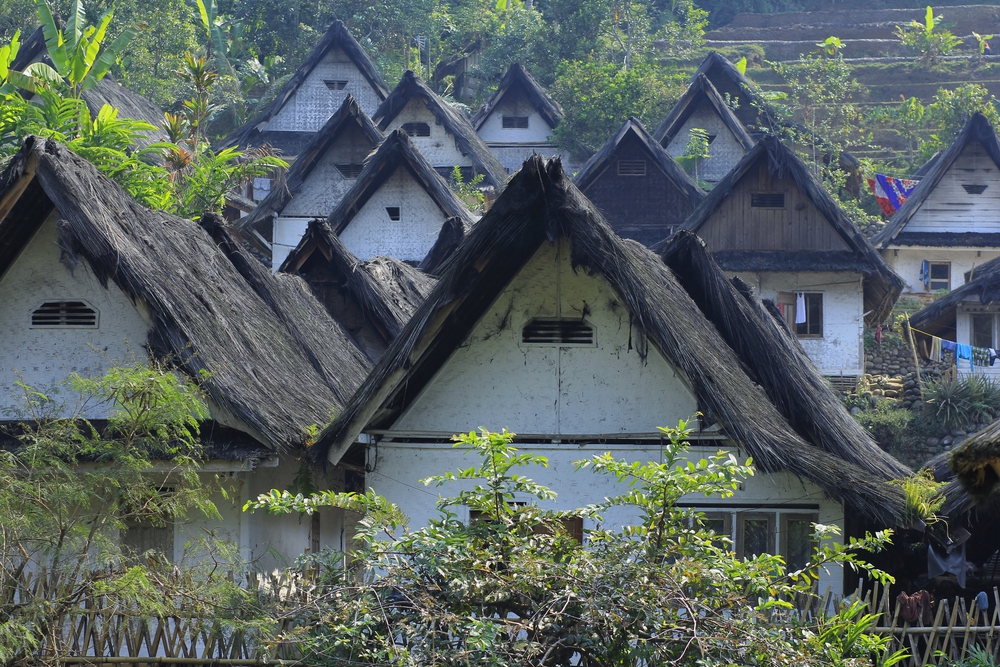
Nestled in a valley surrounded by forest and rice terraces, Kampung Naga maintains
strict traditional practices that govern daily life. The village comprises 113 traditional
houses built without modern materials or electricity.
Their sustainable farming practices and forest management systems have remained unchanged for generations. The community follows a unique calendar system that determines ceremonies and agricultural activities.
Traditional bamboo music performances remain an integral part of village ceremonies and celebrations.
Sade (Lombok)
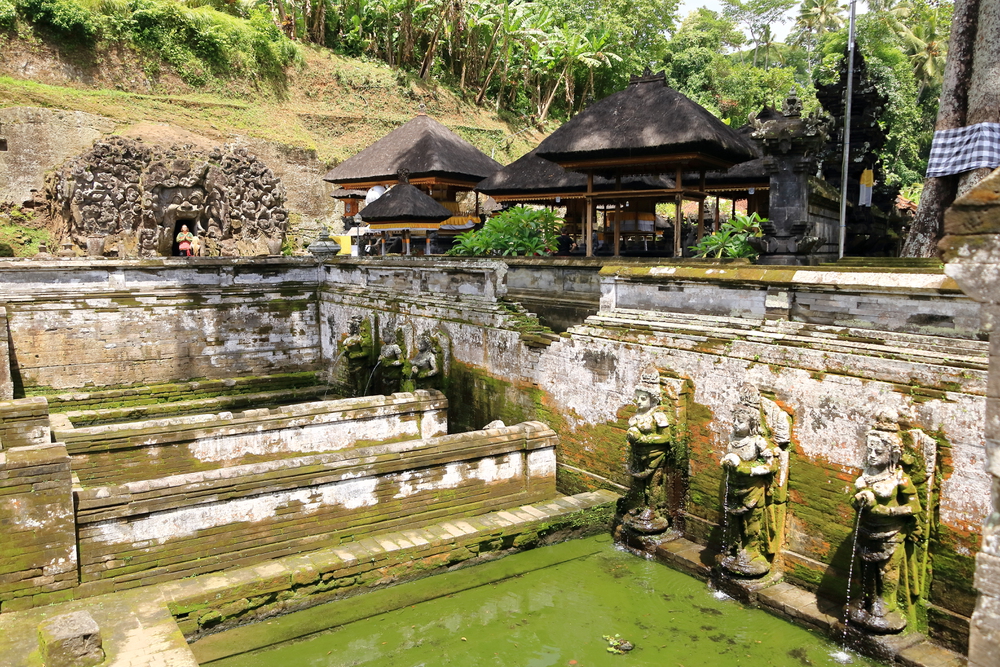
This traditional Sasak village preserves the indigenous architecture and customs of
Lombok’s native people. The distinctive homes feature woven bamboo walls and
traditional thatched roofs made from alang-alang grass.
Women in the village maintain the art of traditional weaving using handmade looms and natural dyes. The community follows strict protocols regarding marriage, social hierarchy, and religious practices.
Their unique architectural style incorporates elevated floors and specific
room arrangements based on traditional beliefs.
Like Travel Pug’s content? Follow us on MSN.
Tana Toraja (Sulawesi)
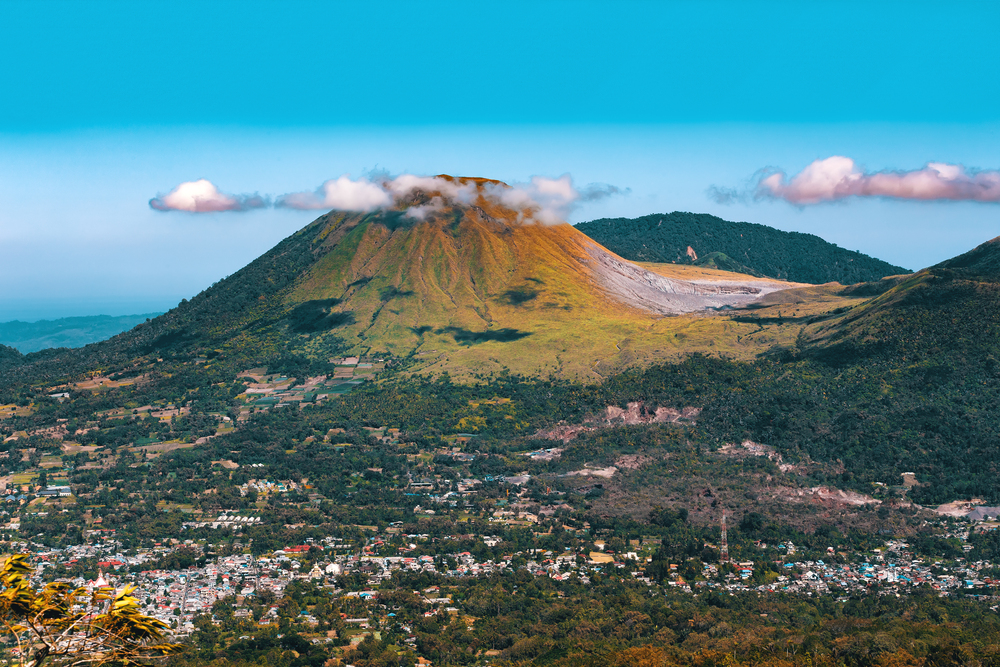
Hidden in the misty mountains, this village complex stands out with the distinctive
culture of the Torajan people. The funeral rite of the community goes on for weeks
and is composed of intricate rituals and slaughtering of animals.
Tongkonan houses distinguish these people with massive roofs resembling boats adorned by carved paintings. Cliff-faced burial sites contain centuries’ of history and cultural identity.
The village still connects much to animistic ways, although influenced by modern
ways of religion.
Boti (Timor)
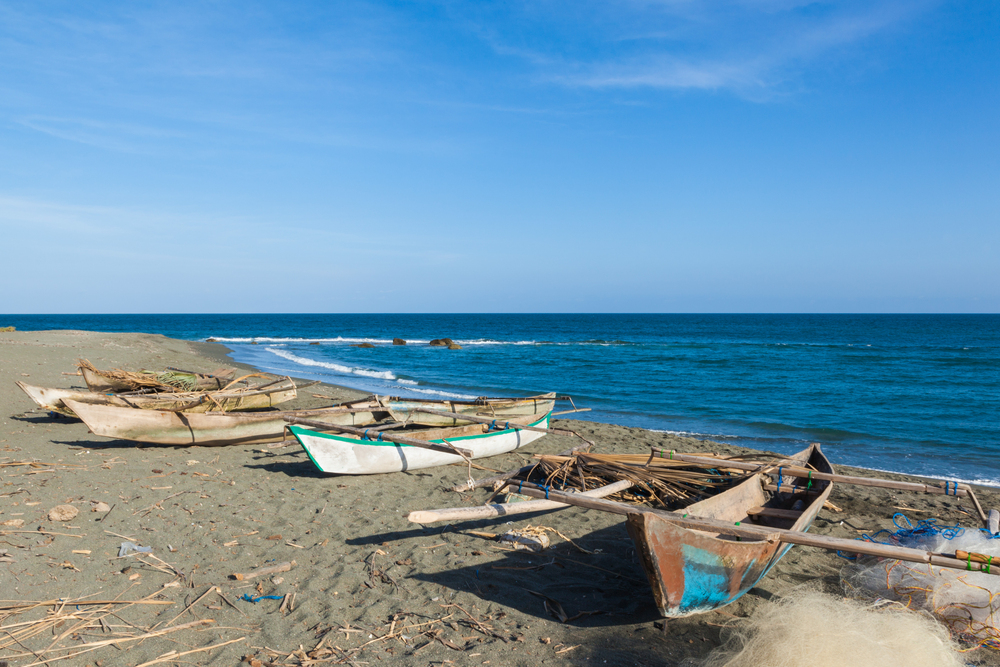
This remote village is one of the last remnants of traditional Melanesian beliefs in
Timor. The chief is the political and spiritual head of the village. Traditional laws and
customs are maintained here.
The people strictly adhere to their natural cycles while farming. They use their old language and medicinal healing.
The weaves carry stories about ancestors’ relationships and culture.
Sikakap (Mentawai Islands)
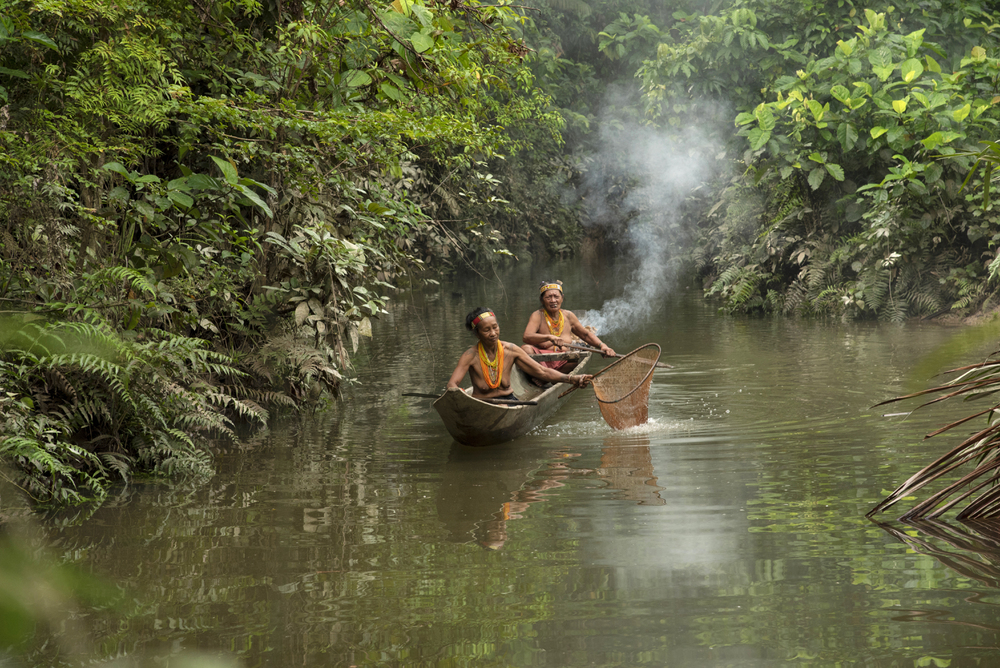
Sikakap remains a traditional Mentawai life on a remote island. The community
maintains customary tattooing practices and significant cultural and social markers.
Their uma- communal longhouses, also serve as centers for activity and decision-
making within a village. Traditional hunting techniques with poisoned arrows are kept
for ritual purposes.
Healing and spiritual practices continue with the roles of village
shamans (sikerei).
Like Travel Pug’s content? Follow us on MSN.
Wologai (Flores)
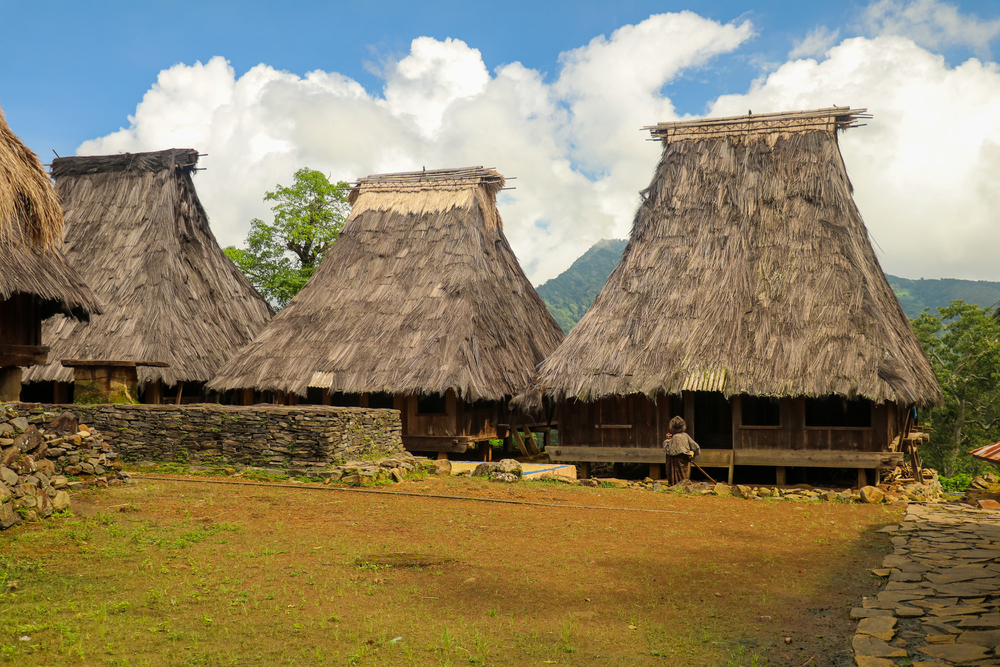
This is a traditional village with architecture tailored to the mountainous nature of
eastern Flores. The ritual houses have unique features and symbolic elements that
characterize the local cosmology and beliefs.
The community continues to preserve ancient megalithic structures used for traditional ceremonies and rituals. Traditional music and dance are integral to village celebrations and rites of passage.
The village layout follows strict traditional rules based on ancestral guidelines.
Prai Ijing (Sumba)
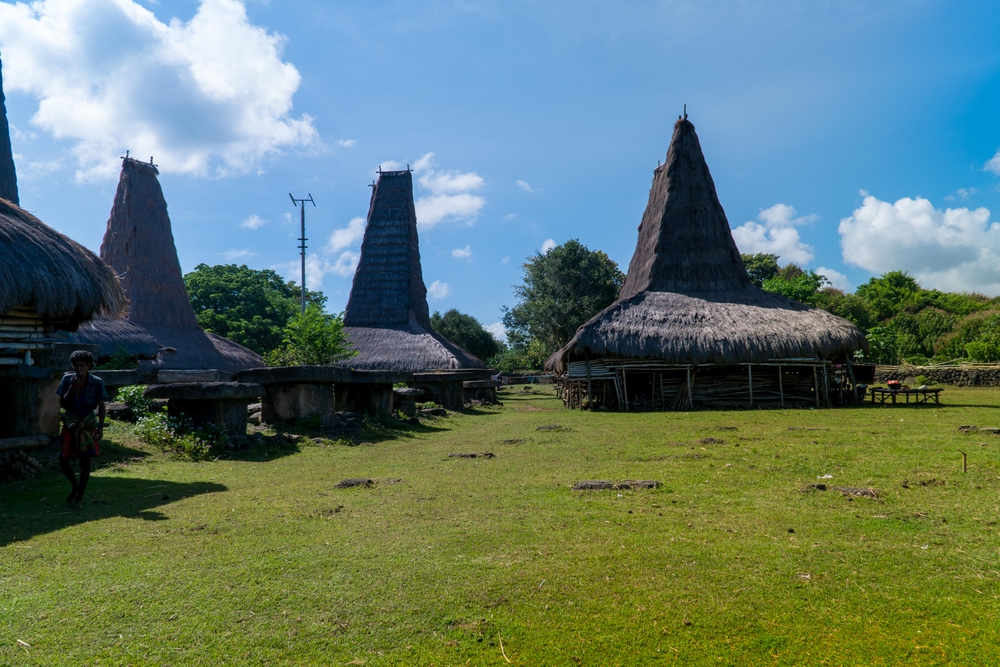
Situated on a hilltop, Prai Ijing is known for its massive megalithic tombs and
traditional high-roofed houses. The village maintains ancient Marapu beliefs that
influence daily life and social organization.
Their distinctive burial practices involve elaborate stone tombs decorated with carved symbols and motifs. The community continues to practice traditional metallurgy techniques for creating ceremonial objects.
Traditional textile patterns here tell stories of clan histories and relationships.
Lingga (North Sumatra)
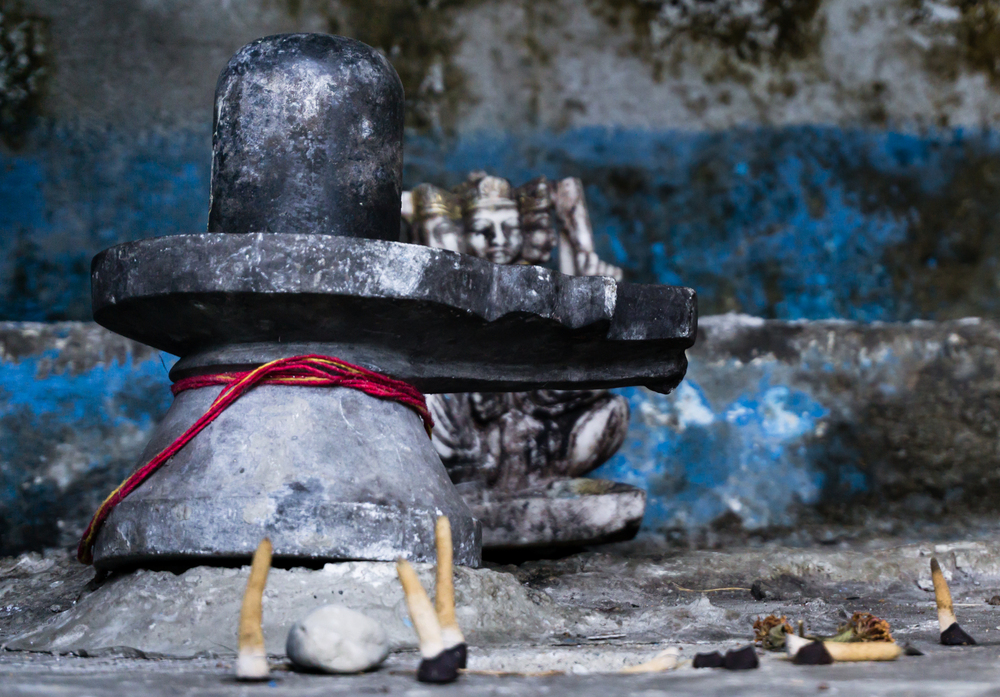
This Karo Batak village preserves traditional architecture, featuring distinctive curved
roofs and elaborate decorations. The community maintains ancient agricultural
practices and traditional buffalo breeding methods.
Their unique musical traditions include performances on traditional instruments made from local materials. The village layout incorporates traditional elements representing cosmic order and social hierarchy.
Ancient wooden carvings throughout the village tell stories of clan histories and mythological events.
Like Travel Pug’s content? Follow us on MSN.
Praijing (Sumba)
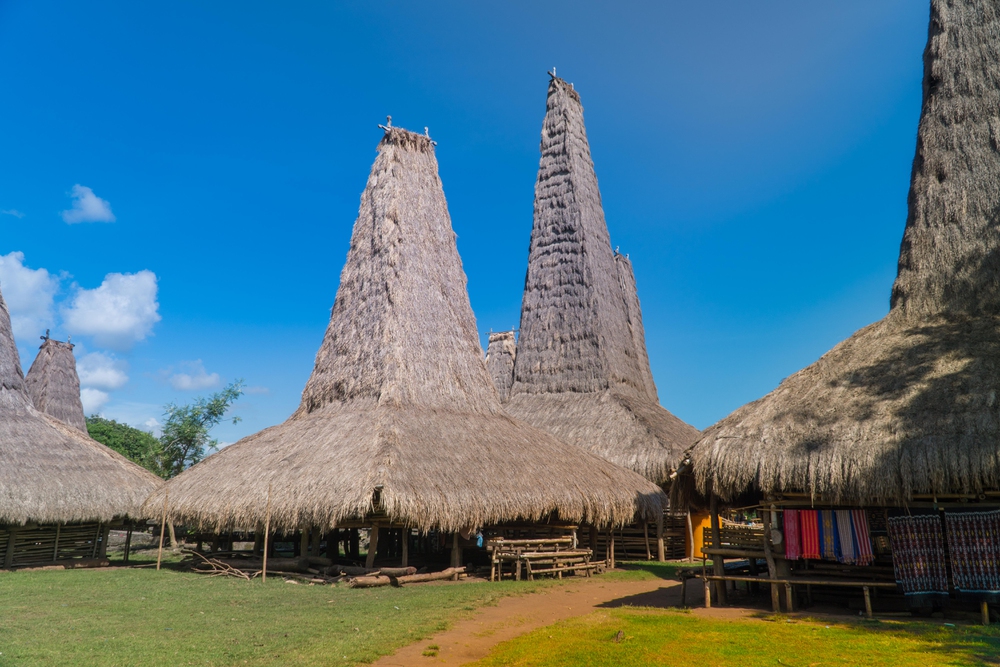
Set among rolling hills, Praijing maintains strong connections to traditional
Sumbanese culture and beliefs. The village features impressive megalithic tombs
decorated with intricate carvings and symbols.
Their traditional houses incorporate unique architectural elements specific to local clan traditions. The community continues to practice traditional metalworking techniques for creating ceremonial objects.
Ancient weaving patterns here preserve stories of ancestral relationships and historical events.
Exploring Indonesia’s Cultural Heritage Lives On
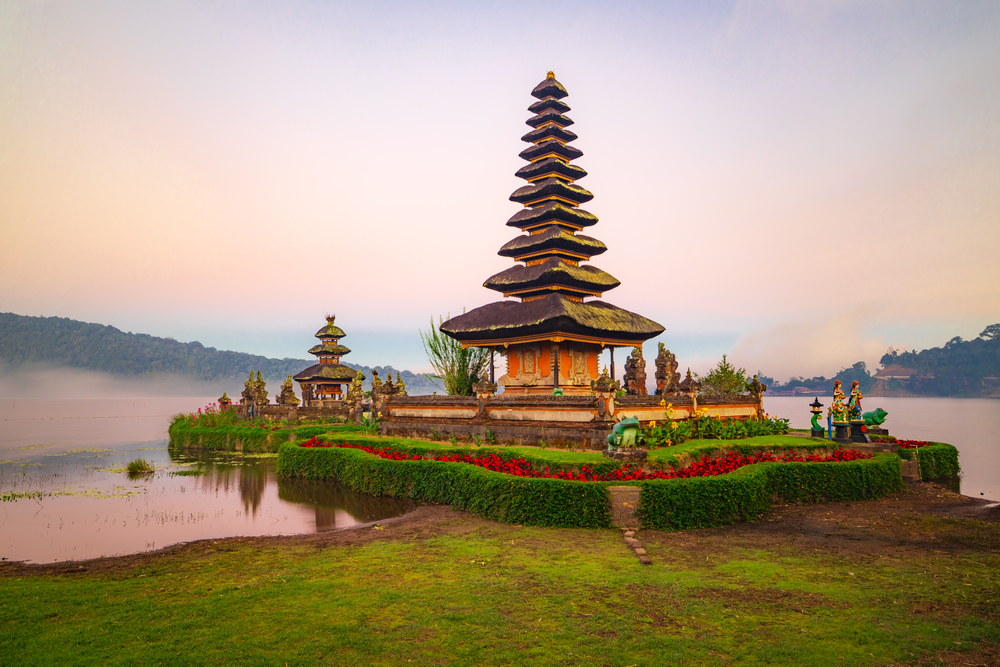
These villages represent just a fraction of Indonesia’s rich cultural tapestry, offering
unique insights into the nation’s diverse heritage. Beyond their role as living
museums, these communities demonstrate how traditional wisdom can contribute to
sustainable modern living.
Their preservation efforts ensure that future generations can experience these
authentic cultural traditions firsthand. As tourism grows, many villages find innovative
ways to share their heritage while protecting their way of life.
More from Travel Pug

- 15 Dangerous European Cities to Avoid
- 15 Caribbean Islands Where Tourists Keep Getting Scammed
- The 20 Most Fascinating Abandoned Places: A Journey Through Time and Forgotten Spaces
- 15 Hidden Places in the Smithsonian Museums Locals Love: A Guide to Lesser-Known Treasures
- 16 Hidden Florida Beach Towns That Aren’t Overrun with Tourists
Like Travel Pug’s content? Follow us on MSN.
